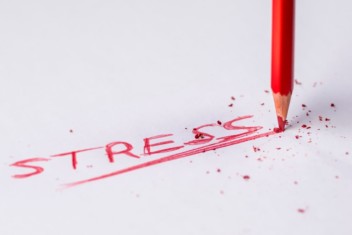Written by: Emma-Tyme Mayrand | Mental Health and Wellness Editor, Starling Minds | B.A. Psychology
Anger has a bad reputation. It’s associated with knee-jerk reactions like yelling, hostility, the cold shoulder and sometimes violence. But suppose we unplug anger from its associated expressions and behaviours. Then, we can explore anger as an emotion—a natural, necessary signal from within warning us of a lack of trust, respect, or safety. By shifting perspective, we can utilize anger as a powerful tool that can strengthen our relationships instead of tearing them apart.
Understanding anger’s role in our relationships
Relationships—whether platonic, romantic, or familial—are often fertile grounds for emotional triggers. Anger, in particular, can harm these connections when we lack self-awareness. Yet, anger is more than a disruptive force; it often signals unmet needs, crossed boundaries, or perceived threats. In this way, it acts as an alarm system, offering an opportunity to understand its source and respond thoughtfully.
A common pitfall arises when we suppress or ignore anger, leaving it unresolved. Instead of dissipating, suppressed anger tends to build over time, lowering our capacity to manage it effectively. This can create a cycle where anger erupts impulsively, causing harm to our relationships.
Recognizing anger early
By recognizing anger early—in our thoughts, physical sensations, emotions, and behaviours—we can interrupt the cycle. Rather than seeing anger solely as a problem, we can approach it as a response to a perceived threat and focus on addressing that underlying threat before it escalates. This shift is key to navigating anger in a healthy, constructive way. Here’s how to recognize it:
- Physical sensations:
Anger often triggers noticeable changes in the body, including muscle tension (such as clenched fists or a tight jaw), a racing heart, sweating, or a flushed face. Some people may feel a knot in their stomach or experience shaking and trembling. - Thought patterns:
Do your thoughts and self-talk lead to blaming, critical, or all-or-nothing thinking? This might sound like: “They always do this to me” or “This is so unfair.” If left unchecked, these thoughts can amplify anger, creating a cycle of frustration. - Emotional experience:
Anger is often accompanied by other emotions, like feeling hurt, abandonment, powerlessness, or overwhelm. Allow yourself to explore the emotional layers beneath your anger for greater clarity and understanding of your current situation. - Behavioural responses:
Notice how anger influences how you act, commonly in impulsive or harmful ways. This could mean raising your voice, slamming doors, withdrawing from others, or being sarcastic or critical.
Exploring your anger
Anger is a signal to open the door to deeper self-reflection. Use these prompts to explore your emotions and navigate anger in a constructive way:
- What is the perceived threat? What am I trying to protect?
Take a moment to identify what feels at risk. Are you protecting your values, boundaries, or unmet needs? Is your anger shielding something important, like your self-respect, emotional safety, or personal goals? - Am I distorting the threat?
Pause to assess whether the threat is as significant as it feels. Could it be amplified by past experiences, insecurities, or assumptions? Or is it rooted in the present situation or behaviour of the person in front of you? - How can I minimize harm to my relationships?
Think about ways to express your anger without escalating conflict. How can you communicate your needs while reducing feelings of threat toward your partner or the situation?
Approach anger as a chance to learn about yourself. This can help turn emotional triggers into opportunities for growth, leading to healthier relationships and personal balance.
Tips to manage anger in the moment
Once you understand the root of the threat behind your anger, the next step is to use this awareness to help navigate your reactions. Here’s how you can feel safer in dealing with feelings of anger while also building safety in your relationships:
- Pause and breathe:
A few slow, deliberate breaths can signal to your body that you are safe. If needed, step away from the situation to give yourself space. This can help to interrupt the cycle of rising anger. - Ground yourself and calm your physiology:
Engage in grounding techniques like Progressive Muscle Relaxation (PMR) or guided imagery to release tension. This can help you reconnect with the present moment and focus on a sense of safety instead of dwelling on the threat. - Foster healthy inner dialogue:
Remind yourself that feeling angry is okay, and you can choose how you respond. Self-talk like, “I can do hard things,” or “I am safe. I can take a step back and breathe,” can help you regain clarity and reduce impulsive reactions.
As you cultivate self-awareness of your anger and use it to improve your relationships, remind yourself that anger is a protective emotion. When recognized, processed and shared with intention, it can protect and deepen connections.
Remember, making time to reflect on your emotional triggers and bodily responses, especially when your anger isn’t activated, will strengthen your ability to manage intense feelings when they do arise. This proactive approach will allow you to understand and express your anger in ways that preserve the well-being of yourself and those you love.




